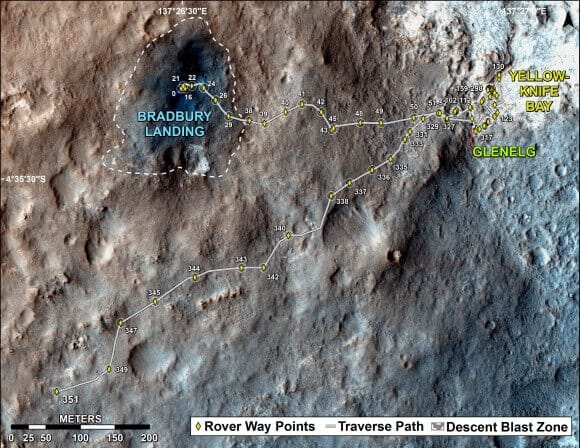"Curiosity landed at the bottom of an ancient stream or lake on Mars," says Jim Green, Director of the Planetary Science Division at NASA, in an interview with Universe Today.

The sophisticated robotic rover Curiosity is celebrating one (earthly) year on the Red Planet since its dramatic landing on August 6, 2012. NASA is marking a year of scientific discoveries, including confirmation that Mars could once have supported life, which was defined as the main mission of the facility, but the good still ahead of him.
"We now know that Mars had favorable conditions for bacterial life billions of years ago," says lead project scientist John Grotzinger of the California Institute of Technology in Pasadena.

"Curiosity landed at the bottom of an ancient stream or lake on Mars," says Jim Green, Director of the Planetary Science Division at NASA, in an interview with Universe Today.
Curiosity is now moving toward Mount Sharp, a 5.5-mile-high mountain that dominates the center of the Gale Crater landing site and is the primary objective of the mission.
During its first year, Curiosity transmitted over 190 gigabit of data, captured over 71 images, fired over 75 laser pulses to study the composition of rocks and soil, and excavated two rocks to analyze its soil samples using two chemical laboratories built on the edge The technology SAM and CheMin.
"The data from the sophisticated instruments on Curiosity tell us that the area could have been inhabited in the distant past of Mars," said Green. "This is an important step towards understanding the history and evolution of Mars." Last week, on August 1 or Sol 351, the vehicle reached a cumulative distance of one mile (1.6 kilometers). Mount Sharp is still eight miles away.
"We are now traveling in a general southwest direction to Mount Sharp," said Jim Erickson, JPL's Curiosity Project Manager, also in an exclusive interview with Universe Today. "We are looking at several possible routes."
Asked how long the journey to Mount Sharp would take, Erickson said he estimated it would be another year.
"We uploaded a new software known as autonav - short for autonomous navigation - on the vehicle in March 2013, this will increase its driving ability."

2 תגובות
This phrase is a kind of nod to many science fiction books that their translators used.
Earthly - probably should be earthy (earth) and not like Atsamoni - independently.
Have a good day and don't rush. tip of Y